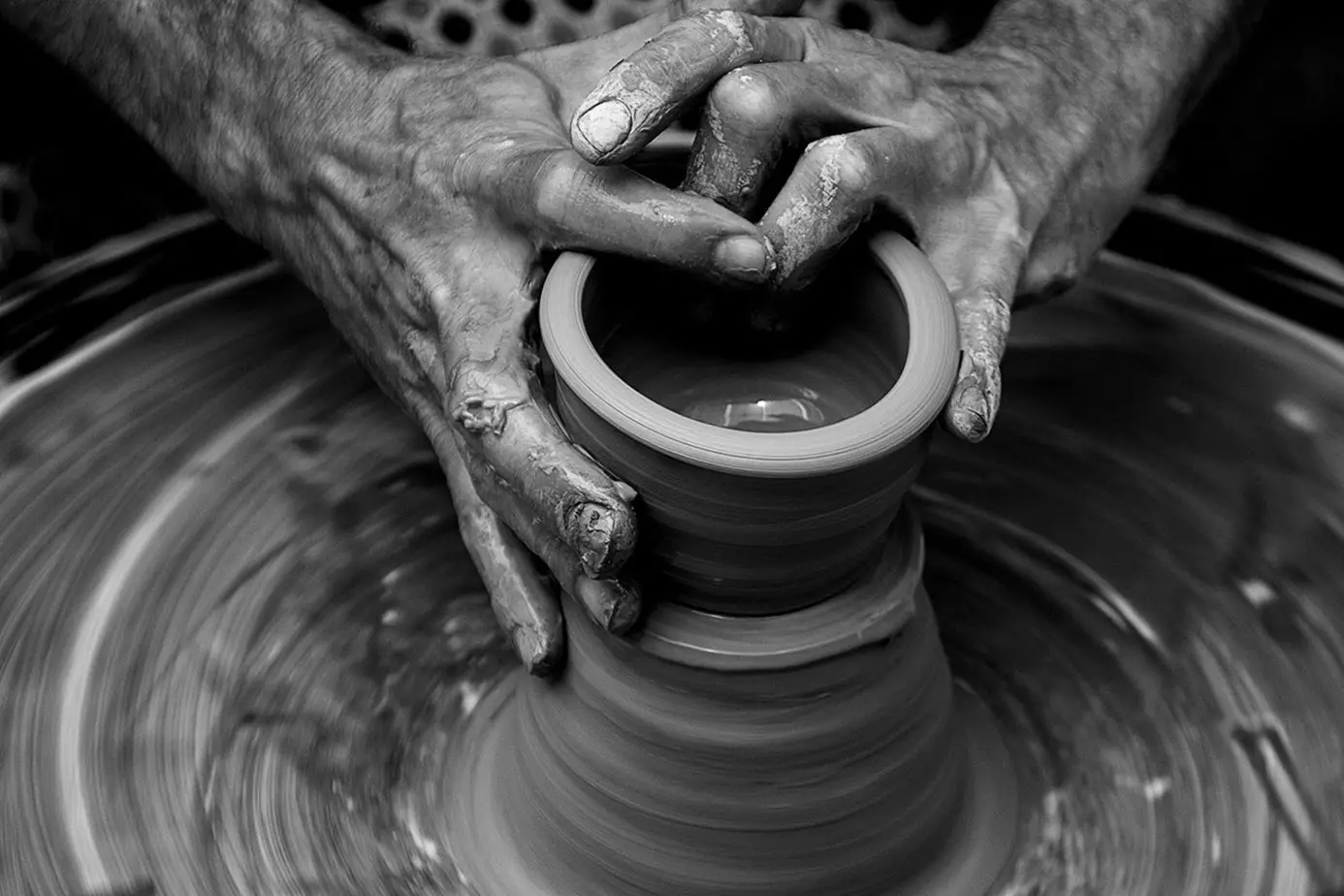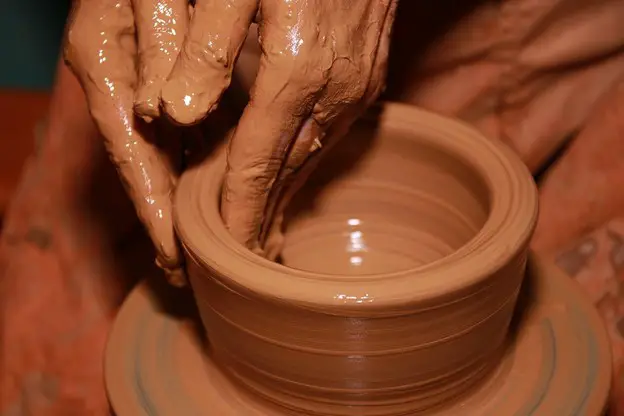Pottery is a skill that requires dedication and years of practice. When you don’t have hands-on experience with pottery techniques, achieving perfection could be tricky. One such technique is pulling. Without the right tips to help you out, you might end up with wobbly or uneven pottery walls. So, how can you avoid that from happening?
Let us learn more about the causes that could lead to the unevenness of the pottery walls.
What causes your pottery walls to become uneven?

1. Not Using the Appropriate Hand Techniques:
The role of your hands in pulling pottery walls is very important. If you lay down a lot of pressure on the clay as opposed to your body, you might end up with unevenly pulled pottery walls. Moreover, you must use light hands to pull the walls. Do not put a lot of pressure. Using too much of the fingers can also cause the pottery walls to become uneven. Try to work with the tips of your fingers as opposed to the whole palm.
When pulling, place your elbow on your thighs so that maximum pressure is on your body and not the clay.
2. Not Starting from the Base:
When pulling your pottery walls, you need to start from the base and work your way up to create the desired shape. Begin from the base up and move away from the fingers once you reach the mouth. However, do not work your way from the top going towards the base. This can create uneven walls as you are essentially undoing your work by going to and fro.
Simply follow one pulling pattern and gently start by pinching from the bottom.
3. Not Ensuring Pressure Balance on the Inside & Out:
When pulling the walls of your artwork, make sure you ensure that the pressure is even on both sides. If you plan on creating straight walls, the pressure should match on the interior and exterior. However, if yours is a vase or something with a neck in the making, you should start by ensuring even pressure and then leaning towards the inner side as you move towards the neck portion.
4. Do Not Pull Too Fast:
When you pull a lot of materials way too fast & too soon, it can lead to unevenness. Some parts of the pottery piece would be too thin and others too thick. Try and develop a slow yet steady pulling pattern to ensure that each segment of the pottery work is the same in thickness. Try to obtain a 1 cm thickness overall. If it is your first pottery piece, you might go a bit thicker. However, make sure you practice to attain a 1cm thickness overall.
The key is to slow down your pace as much as possible and maintain the same throughout. Do not change your pulling force and speed throughout.
5. Check Your Wheel Speed:
If your pottery wheel is moving too fast, it might cause the walls to become uneven. Try to reduce the wheel’s speed by half from what it was during the centering process. If your wheel is way too fast, you might find it hard to control your clay piece. This is especially helpful if you are a beginner.
However, you also need to ensure that the pottery wheel doesn’t go too slow, or it won’t be possible to pull the clay at all. The clay might go off-center or tear down due to the pressure buildup in one spot. The solution is to experiment with the wheel speeds & find what works for you and your experience level.
6. Presence of Air Bubbles in the Clay:
Air, when trapped between your clay particles, can cause uneven wall pulling. One side or another would be lifted, which can lead to wobbly walls. So, the key is to ensure that the clay should be kneaded properly. You also need to check if the clay has been kneaded smooth and rolled into a ball-like shape before you start working with it on a wheel.
If your clay is lumpy or concave-shaped, it would most likely trap some air and cause troubles during the pulling process.
7. Clay Isn’t Wet Enough:
If the clay piece doesn’t have the right amount of moisture for the pulling process, it can stick to your palm & drag away the clay from the center and hamper the pulling process. So, you must use a good amount of water as you pull. This will help make your clay piece abundantly slippery and prevent the hands from getting snagged around during the pulling process.
8. Your Clay Is Too Wet:
Alternatively, if your clay piece is too watery, it could also lead to uneven walls in the clay. Most expert crafters tend to keep a bowl of water and dunk their hands in to get water into the clay. However, that is because they have a good idea of the amount of water required. As a beginner, it is better to use a sponge for the dipping process. This helps introduce just the right amount of water to the clay to ensure the walls pull up just fine without any wonkiness. High-quality sponges such as the Royal Brush Artist Sponge Pack could be an ideal choice. This 3-sponge pack is great for ceramics, pottery, wall pulling, and more.
Let us check out some more faults that could cause unevenness in your pottery walls.
Pulling Faults | Remedies |
| Squeezing Too Hard Breaks the Clay Walls | Make sure you keep the pressure steady as you work your way up |
| Going Faster Than The Wheel | Allow more wheel rotations each time you move your hands in the upward direction |
| Thicker Top Lip Can Make the Walls Bend Downwards | Try to ensure that the wall is of the same thickness from the base to the mouth |
| Off-Center Clay | If your clay hasn’t been centered properly to start with, the issue Will follow through in the pulling process. So, make sure you center the piece properly. |
Conclusion
Pulling up the walls the right way can take a lot of practice. However, once you know the right way to get it done, it can become fairly easy to create some amazing pottery pieces. Do not force yourself and try to pressure the wall into pulling. Flow with the speed of the wheel and the clay and harmonize to obtain the right thickness and even walls.







